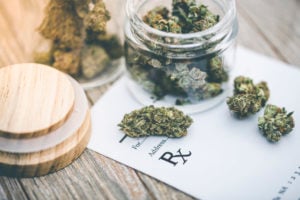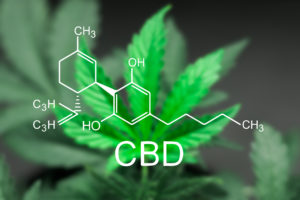Raphael Mechoulam: The Father of Cannabis Research
The Incredible Endocannabinoid System (ECS)
Homeostasis, the ECS, and the Goldilocks Zone
Benefits of CBD: The CBD Action List
Hemp—The Cinderella of the Sativa L Cannabis Family
Raphael Mechoulam: The Father of Cannabis Research
The term “cannabis therapy” was almost unheard for most of the 20th century. When Israeli chemist Raphael Mechoulam, known as the “father of cannabis research” first applied for a grant from the National Institutes of Health (NIH) to study the effects of cannabinoids on human physiology in the 1960s he was abruptly turned down. At the time, cannabis was associated solely with hashish and marijuana, and the cannabis species had a severe PR problem.
In the U.S. the negative public perception of cannabis generated by the notorious 1936 film Reefer Madness still lingered, as it would for generations, and to some extent remains even today. Marijuana use was believed to occur only in the recreational domain of jazz musicians and beatnik poets. The NIH of the early 1960s advised Raphael Mechoulam that his research would be irrelevant since no one in the U.S. mainstream used marijuana! Uh, OK. Hemp, “the other cannabis plant” had fallen so far from its once revered historical status as an agricultural staple to such virtual obscurity that it wasn’t even mentioned in the cannabis research debate.
Undaunted, the intrepid Bulgarian-born Israeli chemist was able to commence his research with 5 kilos of Moroccan hashish donated by the Israeli police who had recently seized the stash coming across the border. Mechoulam’s research would eventually reverse decades of bias against the cannabis species and it was long overdue.
Despite the fact that cannabidiol (CBD) and tetrahydrocannabinol (THC) were among the first of the plant cannabinoids (phytocannabinoids) to be identified in the 1940s, cannabis had to endure a long “research winter” before the pharmacological sector began to take a serious look at the therapeutic potential of the cannabis species. Ironically, today the same NIH which rejected Raphael Mechoulam’s original grant request is now the repository for an amazing archive of cannabis research.
Raphael Mechoulam continues to lead the way in cannabis therapy and research and an understanding of his groundbreaking discoveries is the key to answering the most frequently asked question about CBD, “Why does supplemental CBD work so well for so many different ailments?”
The surprising answer is that your body is already using CBD even if you’ve never taken a single puff of marijuana or imbibed one drop of hemp oil.

The Incredible Endocannabinoid System
Raphael Mechoulam’s preclinical research with rats soon led to the discovery of the CB1 and CB2 cannabinoid receptors in the brain. These are the receptors activated by THC and influenced by CBD. Clinical studies with human subjects quickly revealed that these receptors were more numerous than any other type of neurotransmitter receptor, and Mechoulam knew he was on to something. There had to be a valid reason why the brains of humans and in fact, all mammals, had such an enormous number of these specialized receptors.
In 1992 Mechoulam announced the discovery of two “endogenous” cannabinoids, anandamide and 2-AG, that activated the CB1 and CB2 receptors in the brain and elsewhere throughout the body. Incredibly, our bodies produce their own supplies of cannabinoids internally. This is the origin of the term “endocannabinoid” from the Greek “endo” which translates to “internal” or “within”.
Along with diverse CB2 locations in the immune cells and organs throughout the body, most CB1 and some CB2 receptors are centered largely in the limbic and paralimbic regions of the brain, vital regions which just happen to regulate important functions such as:
- Mood
- Memory
- Immune response and body temperature
- Sleep
- Anxiety and stress reaction (“fight or flight” response)
- Motor control (movement)
- Muscle development and recovery
- Emotion
- Cognitive thought (motivation and drive)
- Appetite and metabolism
- Inflammation response (rashes, swelling, arthritis)
- Pain response and tolerance
The entire complex biocommunication network of various hormones, proteins, amino acids, endocannabinoids, and their associated CB1 and CB2 receptors has come to be known collectively as the endocannabinoid system and its repercussions on the life sciences are not to be underestimated. Dr. David Allen, a former heart surgeon and now a cannabis researcher, describes the significance of the endocannabinoid system as critically important saying in his informative YouTube video :
More people will be saved by manipulation of the endocannabinoid system, than are currently saved by surgery.
That’s quite an impressive statement coming from a heart surgeon, a profession which, let’s face it, isn’t known for its abundance of humility. Dr. Allen isn’t alone in his assessment of the ECS and the astounding therapeutic potential of the cannabis plant. CBD specifically has emerged as the most effective way to “manipulate the endocannabinoid system”. Doctors today are focusing on CBD’s use as an “adjunct therapy”, attracted by its positive side effects profile compared to traditional medications, its drug interaction safety, and CBD’s non-psychoactive nature.
Homeostasis, the ECS, and the Goldilocks Zone
As Dr. David Allen explains in his video, maintaining homeostasis is the mission of the ECS. In his article at Scientific American, Emeritus Professor Kelvin Rodolfo of the University of Illinois defines the term “homeostasis” as “any process that living things use to actively maintain fairly stable conditions necessary for survival.”
In layman’s terms homeostasis is the regulating process which keeps our bodies and minds in what some in the health and fitness industry call “The Goldilocks Zone”. This is that wonderful state of well-being where everything is “just right”. When the ECS has a sufficient supply of endocannabinoids it hums along quietly, regulating sleep, moderating the appetite, activating the immune response to fight off disease and infection, processing emotions, and directing the healing processes for injury recovery.
Science writer Petar Petrov presents the scenario of how the ECS responds to a simple cut in his article “The Endocannabinoid System Simplified” at Terpenes and Testing Magazine. There, he describes the reaction of the ECS where the endocannabinoids anandamide and 2-AG work to decrease the sensitizers in the affected area to moderate pain response in the nerve cells. The endocannabinoids’ anti-inflammatory action keeps the inflammatory response substances released from the immune cells under control to prevent excessive swelling.
With a sufficient supply of naturally generated endocannabinoids, the complex biofeedback network that is the ECS excels at keeping “all systems go” in the variety of environmental conditions which are part of life on planet Earth. Problems arise when homeostasis is disrupted by serious injury, disease, excessive stress, or toxic environments and the ECS is overwhelmed. In these cases of extreme physiological stress, the natural endocannabinoid supply can be insufficient to restore the balanced state of well being and homeostasis is disrupted.
The solution for restoring homeostasis is to supplement the body’s short supply of endocannabinoids with chemically identical phytocannabinoids from the cannabis plants, either hemp or marijuana. This is what Dr. David Allen is referring to when he speaks of “Manipulating the endocannabinoid system.” Since we are already “prewired” to make the best use of available cannabinoids with the ECS, supplemental CBD and THC both have potent effects on the body and mind.
One of the most amazing capabilities of the ECS is to apply the principles of homeostasis to maintain itself for enhanced homeostasis. Sounds complicated? Recent evidence is pointing to the possibility that when a surplus supply of CBD is available the ECS will generate even more CB2 receptors to make the best use of this cannabinoid abundance. More CB2 receptors result in more efficient biofeedback and enhanced ECS communication. CBD also raises the natural levels of the painkilling, mood-enhancing endocannabinoid anandamide. This could explain its potent anti-anxiety and anti-depressant effects as well as its analgesic property.

Benefits of CBD: The CBD Action List
Following the discovery of the ECS, cannabis, at last, became the focus of extensive research, with a notably intense expansion of CBD studies commencing in 2011. Over 100 distinct cannabinoids have been identified, and while some lesser known cannabinoids are also showing promising therapeutic potential, CBD and THC are still the two best documented for pharmacological actions. While both cannabinoids have clinically proven therapeutic value, CBD has emerged as the dominant cannabinoid, identified as the safest nonpsychoactive (doesn’t get you high) source for the majority of healing benefits attributed to the cannabis species.
Cannabidiol has a diverse range of “pharmacological actions” which have been well documented in a host of preclinical studies (on animals) and clinical studies (on human subjects). The list is quite impressive and we begin to get an inkling of just how CBD can work so well for such a diverse range of maladies as a supplement for natural endocannabinoids. Below is the list of known CBD actions.
- Antioxidant: We’ve all become familiar with the “free radicals” which are released by oxidative stress, an unavoidable consequence of being a living, breathing organism on planet Earth. Electrons in cells naturally operate in pairs and metabolizing oxygen results in “orphan electrons” which cause damage to healthy cells by “borrowing” electrons to pair up again. The process is progressive and causes many of the debilitating conditions of aging, such as increased cancer risk and heart disease from damaged blood vessels. Anti-oxidants act as “electron donors” to reduce the number of free radicals and enhance cellular health and growth. Vitamins C and E are powerful anti-oxidants, but CBD is more powerful than both.
- Anti-anxiety (anxiolytic): Fear and anxiety are survival mechanisms but when they are excessive they can evolve into serious disabilities such as Post Traumatic Stress Disorder (PTSD), generalized anxiety disorder (GAD), panic disorder (PD), and the more common social anxiety disorder (SAD), and obsessive-compulsive disorder (OCD). CBD interacts pharmacologically with receptors known to regulate fear and anxiety response including the CB1, vanilloid TRP, and serotonin 5-HT1A receptors.
- Anti-depressant: CBD’s effect on the serotonin receptors and its ability to raise levels of the natural mood-elevating endocannabinoid anandamide can alleviate symptoms of depression and reduce stress levels. According to the Depression Alliance, CBD “helps to significantly improve depressive symptoms and the individual’s quality of life”.
- Anti-epileptic: Two rare forms of epilepsy, Davets Syndrome and Lennox-Gastaut syndrome, were instrumental in bringing CBD into the spotlight. The FDA recently approved the drug Epidiolex (cannabidiol CBD oral solution) for the treatment of seizures for children suffering from these rare conditions which have been resistant to traditional anti-seizure medications.
- Anti-psychotic- CBD has shown its potential for treating neuropsychiatric disorders in a recent study at the University of Cologne in Germany, involving 39 schizophrenia patients. 20 of the patients received CBD and 19 others received a traditional antipsychotic drug. Daniel Piomelli, Ph.D., professor of pharmacology at the University of California-Irvine concluded, “Not only was CBD as effective as standard antipsychotics, but it was also essentially free of the typical side effects seen with antipsychotic drugs.” Those very serious side effects include reduced motivation and pleasure, weight gain and diabetes, and permanent movement impairment, which weren’t observed in the lucky 20 patients who received CBD.
- Anti-inflammatory: The inflammation response is the body’s way of protecting itself against infection, disease, and injury. White cells, immune cells, and infection-fighting cytokines all increase. Phytocannabinoids, especially CBD, regulate cytokine production. One form of inflammation is arthritis which affects over 50 million Americans. CBD offers a safe alternative without the risk of building up tolerance or addiction. Other inflammatory conditions for which CBD is indicated include Crohn’s Disease, and irritable bowel syndrome (IBS).
- Analgesic (pain killing): CBD’s anti-oxidant and anti-inflammatory effects play a large part in its potential for pain management. Both marijuana and hemp have been used from the dawn of civilization to manage pain. George Washington, an avid hemp cultivator himself, allegedly used hemp to alleviate pain from gout and dental problems. Queen Victoria used hemp oil to manage menstrual cramps. Cannabis was used as a medicine by the ancient Chinese as far back as 2700 BC. Today, many professional athletes are turning to CBD and medical marijuana as alternatives to the addictive opioids they’ve been prescribed to manage pain and enhance injury recovery.
- Anti-cancer-Antiemetic- (alleviates nausea and vomiting): There is still much work to be done to home in on CBD’s anti-cancer effects. Preclinical studies have shown that CBD has an apoptosis action, the medical term for inducing cell death. CBD interferes with the blood flow cancer cells need to grow and keeps them from reproducing and spreading (metastasizing). Preclinical studies with mice are showing that CBD can target and induce death in cancer cells without affecting the healthy cells around them. CBD’s antiemetic action helps cancer patients endure the side effects of strong chemotherapy.
- Neuroprotective: CBD’s powerful antioxidant effects give it a potent neuroprotective action. CBD encourages robust growth and health in nerve and brain cells which makes it perfect for recovering from concussive head injuries caused by trauma, oxidative stress caused by autoimmune disorders, and genetic conditions which trigger neuron damage. This makes it beneficial for managing symptoms and slowing the progress of serious neurodegenerative disorders such as amyotrophic lateral sclerosis (ALS, Lou Gehrig’s Disease), epilepsy, multiple sclerosis (MS), and Parkinson’s disease. The neuroprotective action can also aid recovery from stroke.
Legal Hemp—The Cinderella of the Sativa L Cannabis Family
While all marijuana is cannabis, not all cannabis is marijuana. Hemp is the long forgotten stepsister of the Sativa L. cannabis family but CBD research is finally putting hemp into the cannabis therapy spotlight. To this day marijuana continues to hold its spot as America’s favorite cannabis plant, both medicinally and recreationally, but a paradigm shift is underway. The ugly stepsister is about to have her day at the ball as the CBD liquid gold rush intensifies.

If you’ve checked out some of the linked sources in this paper, you may have noticed how often CBD is referred to as “a compound found in the marijuana plant”. Hemp is hardly mentioned, which is a bit strange since hemp is naturally rich in cannabidiol content. All of that is about to change with the recent passing of the 2018 Farm Bill. That’s good news for health consumers who use CBD from hemp oil as a part of their self-administered health regimen. For marijuana users? Not so much.
It is important to note that CBD derived from marijuana is still illegal in many states. Section 11013 of the 2018 Farm Bill requires that CBD must be derived from industrial hemp only, and for a cannabis strain to qualify as industrial hemp it must contain no more than .03% THC content. That means that CBD derived from marijuana is not protected by the new legislation. After years of manipulative breeding for high THC content for recreational and “spiritual” purposes, today’s marijuana’s THC content is through the roof.
Ironically the CBD content in marijuana counteracts the psychoactive effects of the THC content. While CBD may enhance mood in the long term by its positive influence on the ECS, it’s literally the “buzzkiller” in marijuana. Scientists were tipped off to this fact in 1982 when it was discovered that a rash of patients experiencing psychotic episodes at a psychiatric hospital in South Africa had been smoking a strain of cannabis which was “virtually devoid of CBD content”. Since the advent of the ECS medical marijuana growers are turning their attention to developing higher CBD strains, but as long as they contain more than .03% THC they’ll still be considered as “non-hemp cannabis” and still be subject to federal and state restrictions.
Medical marijuana users frequently need to experiment with various strains in an effort to find the most suitable CBD/THC ratio to achieve the results they seek for the symptoms they are treating. Since hemp was bred selectively over the centuries as a source of fiber and oil its THC content is now at minuscule trace levels. Fortunately, hemp is rich in CBD content.
While THC and many of the other recently identified cannabinoids exhibit some of the same therapeutic actions, THC is contraindicated for many of the disorders that drive people to seek a cannabis therapy solution such as anxiety, stress, and insomnia. THC’s unpredictable psychoactive effects can actually increase anxiety and stress by triggering adrenaline rushes.
While CBD naturally enhances the actions of the CB1 and CB2 receptors indirectly by affecting the way they interact with other substances such as serotonin and vanilloid, THC aggressively binds with the CB1 receptors which are in place to receive anandamide better than the anandamide endocannabinoid itself. This produces the intense short-term high for which marijuana is so popular, but it may also disrupt levels of mood-elevating anandamide production which in turn disrupts the ECS’ ability to regulate sleep, mood, and cognitive thought processes.
Conclusion
With CBD from hemp, there is no risk of getting high. This is an important consideration for those who strive to stay at the top of their games both mentally and physically, not to mention compliance with zero tolerance drug policies which are so prevalent in today’s business world. CBD can enhance an active lifestyle by enabling the ECS to maintain the “Goldilocks Zone” of homeostasis while avoiding the pitfalls of addiction, tolerance, fatal overdose, and residual side effects which can occur with traditional long term use of OTC NSAIDs, opioids, and antidepressants.
Incredibly, CBD has risen to the top of the cannabis therapy ladder without the benefit of any organized mass media marketing campaign. It owes its worldwide popularity to word-of-mouth anecdotal evidence from satisfied CBD users who are only too eager to spread the good news about cannabidiol. Many who try CBD to address symptoms such as pain or inflammation are surprised to find that they are now sleeping more soundly, thinking more clearly, and enjoying an unanticipated sense of wellbeing which is the result of an optimized CBD enhanced endocannabinoid system.



